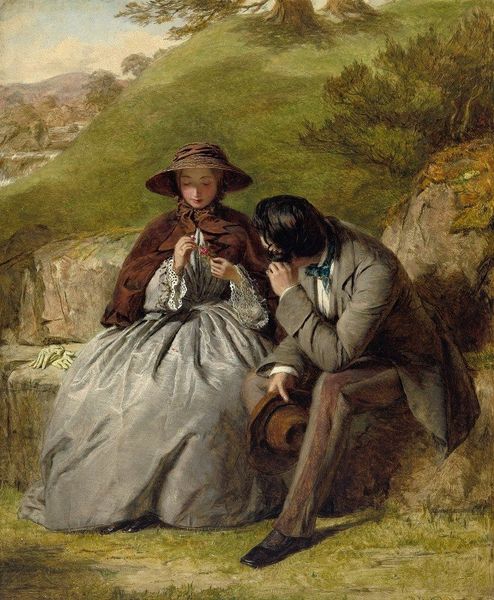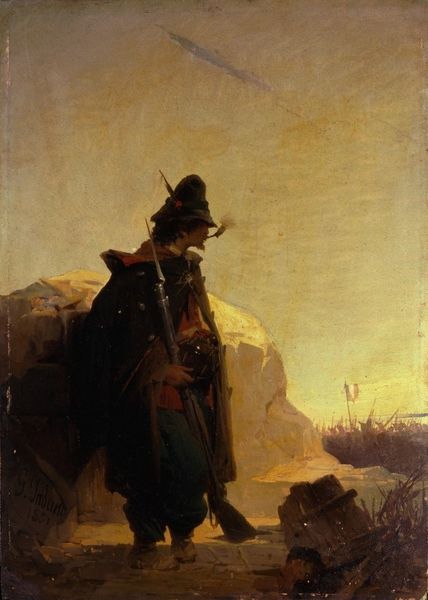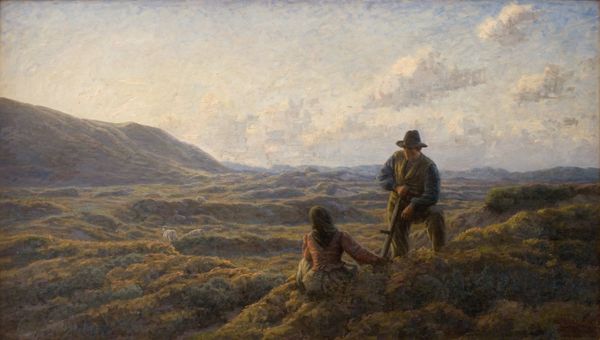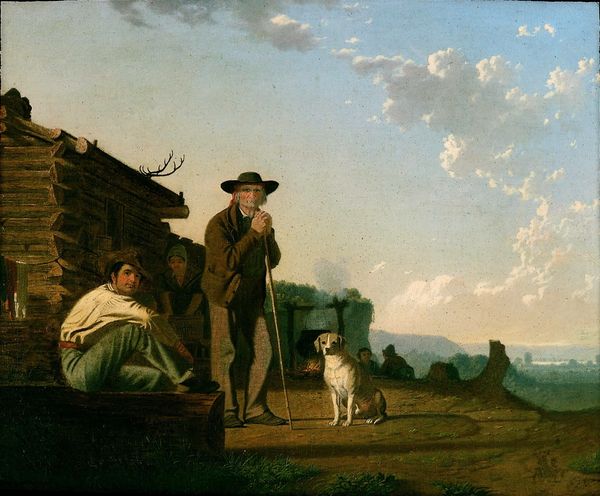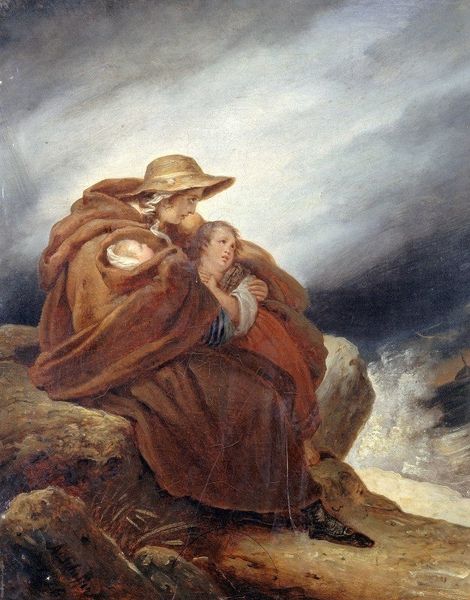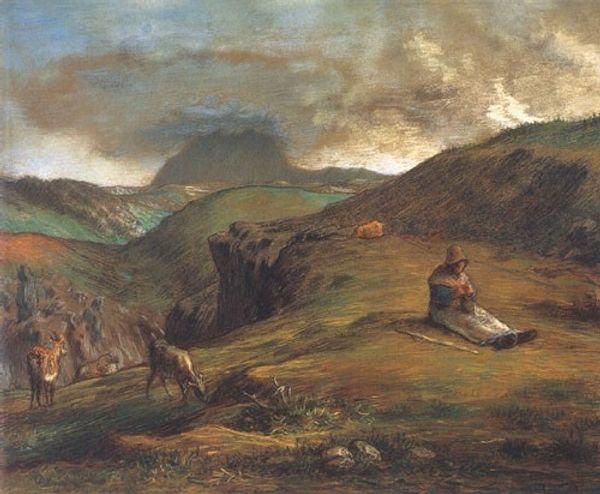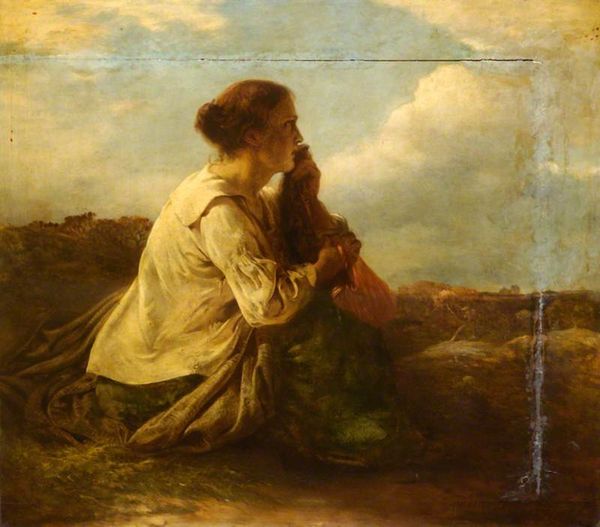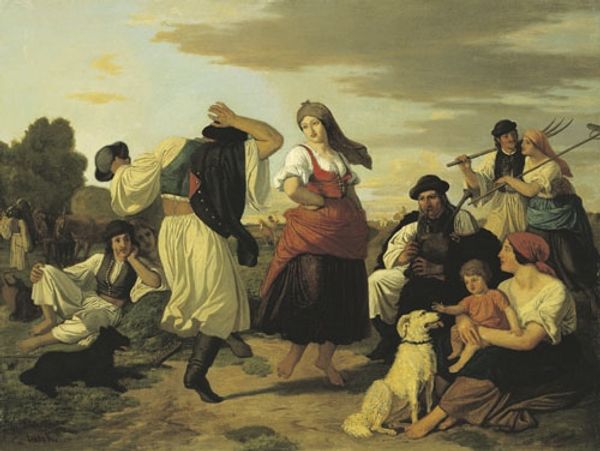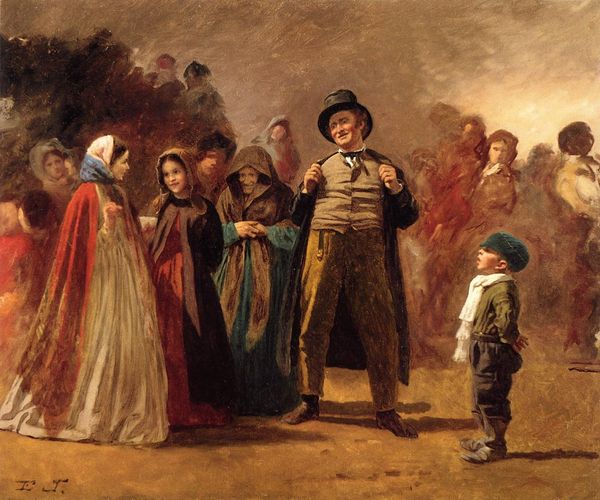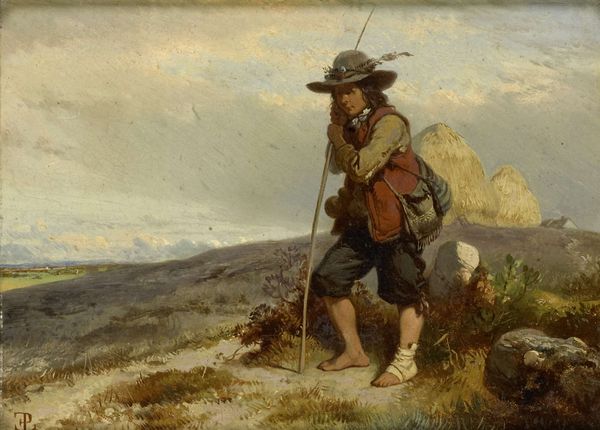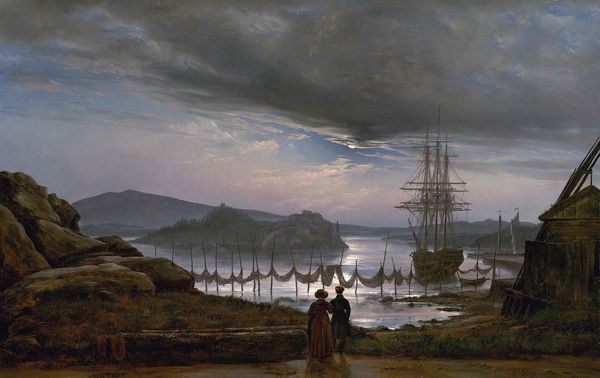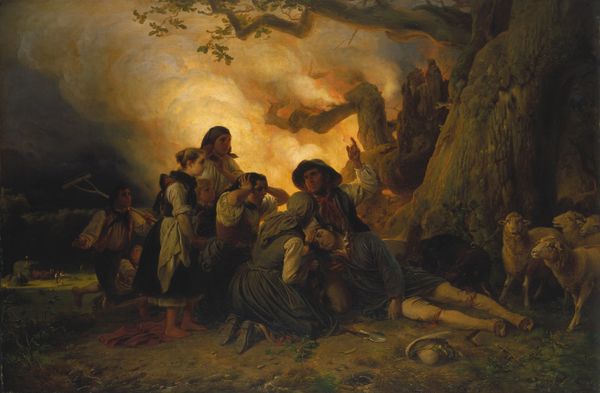
#
figurative
#
possibly oil pastel
#
portrait reference
#
animal portrait
#
surrealism
#
animal drawing portrait
#
portrait drawing
#
portrait art
#
fine art portrait
#
celebrity portrait
#
digital portrait
Copyright: Public Domain: Artvee
Editor: Delacroix's "Hamlet and Horatio at the Cemetery," painted in 1835, is arresting. There’s such theatrical drama and a strange stillness in the way the characters are arranged against the bleak landscape. How do you unpack all the symbolism embedded here? Curator: Ah, yes. Consider the skull, of course, the quintessential *memento mori*. Hamlet holds it, contemplating mortality itself. But it’s more than that; it’s a portal into memory. Who was Yorick? And what echoes of that life resound through Hamlet's grief and questioning? Note, too, how the light falls… does it suggest hope, or merely highlight the bleakness? Editor: I hadn't thought about light's ambiguity. What about Horatio? He stands, arms crossed, seemingly detached. Is he a counterpoint to Hamlet's emotional turmoil? Curator: Precisely. He's an observer, a witness. And his presence raises questions. What does it mean to bear witness to another’s pain, to stand apart from it, yet remain connected? Delacroix understood how visual symbols serve as anchors to shared human experience. Horatio's stance evokes fortitude, perhaps even resignation, qualities linked across centuries of similar portrayals. Editor: So, these visual choices cement the emotional weight and broader historical relevance? Curator: Exactly! We respond not just to the scene depicted but to the layers of meaning accumulated over time. Think of other instances when the skull has appeared in art…consider the cross behind Horatio, a traditional symbol of death but of promise too; a symbol is only potent when it’s inherited baggage is also engaged with. Delacroix uses these emblems of culture to communicate ideas across generations. Editor: That makes me think about how timeless these themes are. Thanks; I'll definitely consider cultural symbols with more intention going forward! Curator: A pleasure. It is amazing to understand how symbols carry the weight of collective memory!
Comments
No comments
Be the first to comment and join the conversation on the ultimate creative platform.
